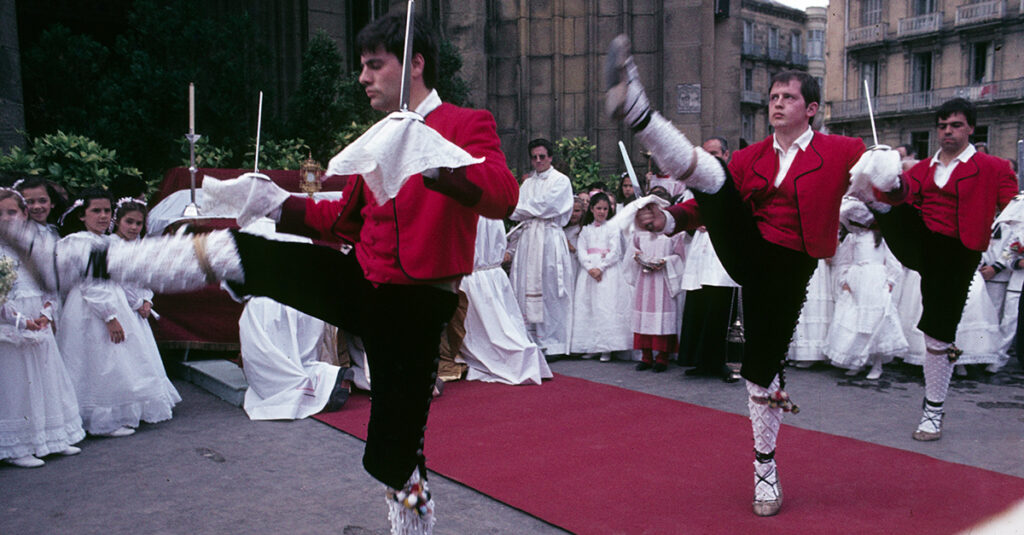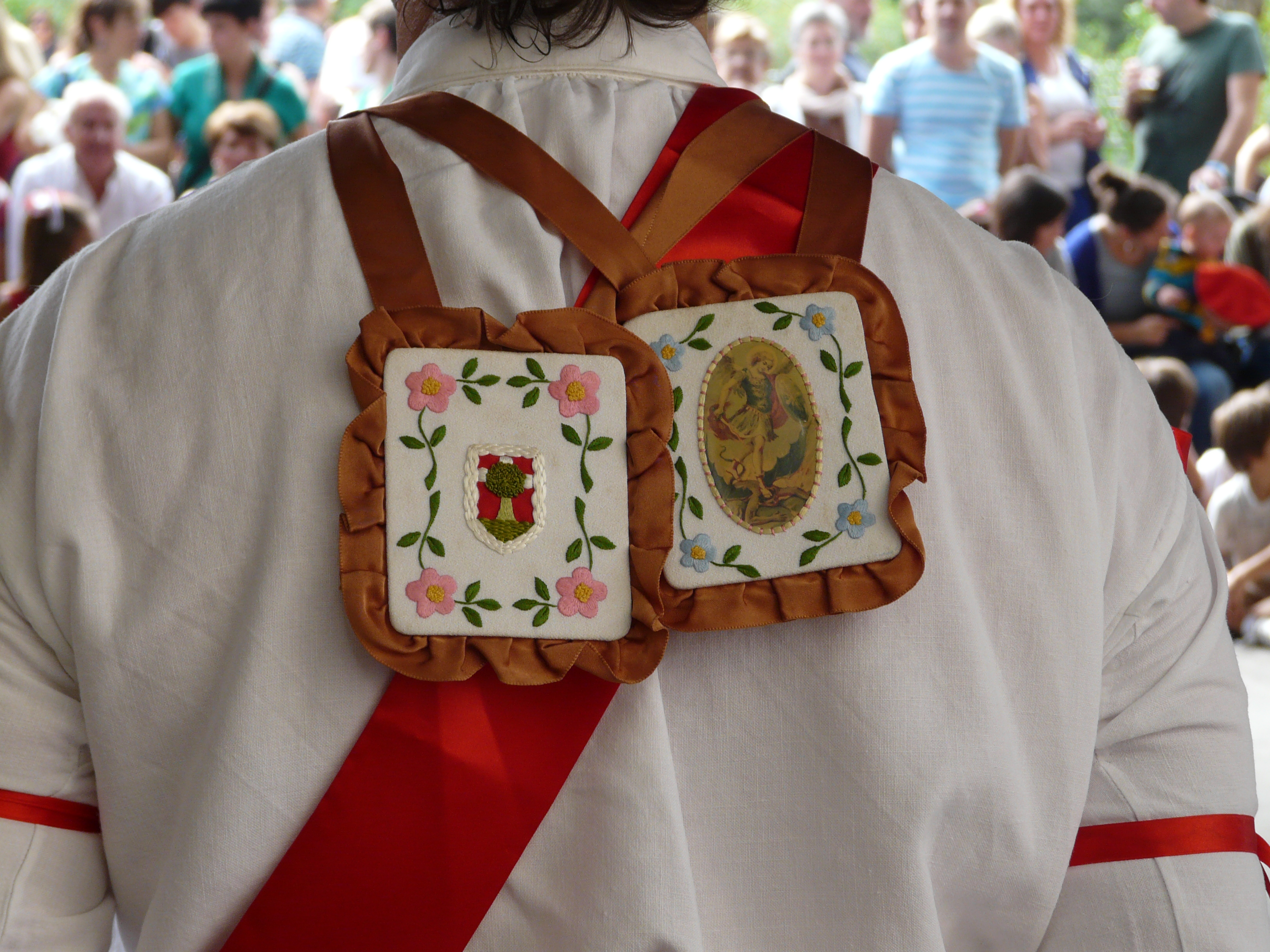Archives

Ezpata Dantza (sword dance) for Corpus Christi performed by Goizaldi Dantza Taldea (Donostia, 06/06/1985). Photo: E. X. Dueñas
“Traditional” and/or “Basque” is one way of pigeonholing the dance performed by groups here. That has not always been the case and that is also true of how they are performed, however hard people champion the authenticity and, therefore, the inflexibility of steps and shapes down through the centuries.

Bobo and dancers. Danzas e indumentaria de Navarra [Dances and clothing of Navarre], by Francisco Arrarás.
The beautiful Pyrenean city of Ochagavía (Navarre) is located in the north of the Salazar Valley, and high above it, at an altitude of about 1025 m, the Sanctuary of Muskilda and its unique environs. Built in the 19th century and restored in the 17th, the Romanesque hermitage stands on top of the mountain of the same name, at the foot of the Irati Forest, a Gothic sculpture of the Virgin being preserved therewithin. (more…)

Parhelion. Josu Larrinaga Zugadi.
The eve and the feast day of St John (24 June) are well known to encompass a large amalgam of symbolic rituals associated to earth (people, animals, harvests and protective vegetables), water (beliefs about cleansing, regeneration and healing), air (magic moment for purging from nocturnal and malignant beings) or fire (purifying or renewing element). As regards the latter, we are familiar with the custom of climbing certain highlands in the early hours of St John’s Day to observe the dance performed by the king star or dancing sun (optical effect of the scientifically so-called sun dog, parhelion or fake sun). (more…)
Traditional dances are an essential part of our culture and testimony of our character and personality. Each region maintains its own dances, and some of them extend across regions. In Markina-Xemein two dances are performed on the feast of St Michael, 29 September: the Xemein sword dance and the Mahaiganekoa dance. (more…)


